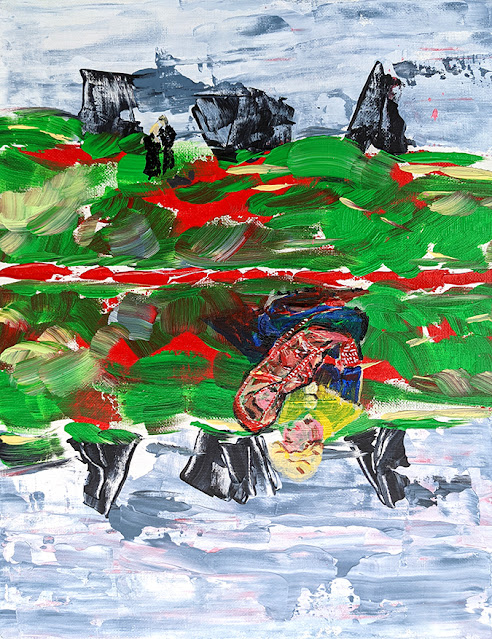Jabme-Akka is the akka of the dead in Sami mythology. She rules over Jabmiaimo, which mirrors the land of the living. The dead live as they did on earth, but in a youthful state. Source: Patricia Monaghan's Encyclopedia of Goddesses and Heroines. Jabme-Akka soothes babies that enter her land unaccompanied. (Source)
Entrances to the underworld were located around "sieidis, places that have unusual land forms different from the surrounding countryside, and that can be considered to have spiritual significance." The Sami worldview was "that the living and the departed were regarded as two halves of the same family." The sieidis were places that were close to the underworld and where offerings could be left. (Source). The sieidis were also places for burials.
My painting is set near a sieidi in Saltfjellet.
Sadly, "like many other indigenous groups, Sami activists have been fighting for decades to recover the bones of their ancestors. Between 1850 and 1940, many graves were disturbed to feed theories based on phrenology. These were not only ancient sites. A pair of Sami men executed in 1854, for example, ended up with their skulls in the collection of the University of Oslo. Their bones were only returned to their families in 1997. The treatment of Sami remains and their academic value is still a subject of controversy." (Source)
Painting this version of the underworld made me consider beliefs that I was brought up with, the importance of baptizing babies to save them from Hell. What a terrible thought. At one point, the summer Bible camp pastor convinced me that everyone I knew and loved who wasn't born again was going to burn in Hell for eternity. That was intense for a sensitive child. I like this afterlife better.
Additional Sources:

Comments
Post a Comment